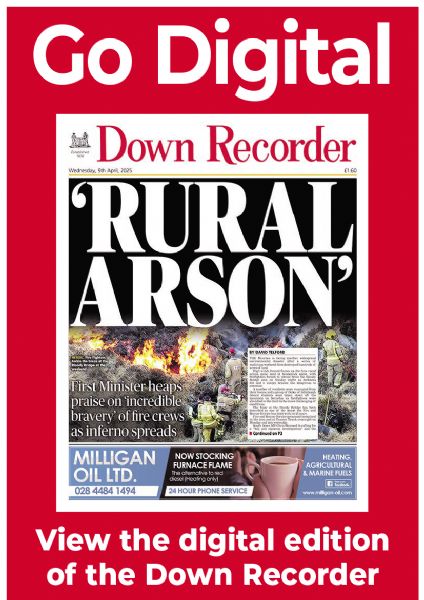Rainfall in region ‘third wettest year’ since records began
Rainfall in region ‘third wettest year’ since records began
10 January 2024

A DOWNPATRICK man and former Met Office weather watcher has warned that the planet needs to address climate change more seriously following last year’s severe rainfall.
Michael Welch says the rainfall in 2023 was more than double that in the previous year.
Using standard Met Office equipment Michael Welch has continued to monitor rainfall levels as an informed hobby since his retirement.
In 2022, Michael recorded the rainfall level for the year to be 856 millimetres (33.7 inches). In 2023, the level skyrocketed to 1,835mm (72.24 inches) – an increase of 979mm from the previous year.
Incredibly, the last three months of 2023 accounted for 1,052.9mm (41.5 inches).
“Like it or not, we have to take climate change seriously,” said Michael, who moved to Downpatrick in 2021.
“These figures will at least give us an example of how changes in the planet’s atmospheric circulation can have far-reaching and sometimes devastating consequences.
“In Northern Ireland we have experienced eight named storms in the very recent past.
“I believe this is driven by the upper jet stream, and this west to east flow means that in our latitude we are close to or under the boundary between arctic cold air and tropical warm air.”
Michael’s observations were similar to those of the Met Office, which confirmed that 2023 was Northern Ireland’s hottest year since records began 100 years ago.
One environmental expert has warned that “more impactful weather” is likely in the future, including flash flooding.
“The ten warmest years in Northern Ireland have all occurred since 1997 and the top five years include 2014, 2022 and 2023,” said the Met Office’s senior scientist Mike Kendon.
“While our climate will remain variable, with periods of cold and wet weather, what we have observed over recent decades is a number of high temperature records tumbling.
“As our climate warms, the atmosphere has a great capacity to hold more moisture, so we are expecting the climate to become wetter and warmer.”
He continued: “2023 was also the third wettest year for Northern Ireland in our records for the region, which date back to 1836.
“There was about a fifth more rainfall than normal [1,399mm] and July was equally the wettest on record for Northern Ireland.”
Met Office scientists have calculated that 2023’s average temperature would have been a one-in-500-year event without humans changing the climate through producing greenhouse gases.
This is now a one-in-three-year event and by the end off the century, it could be happening almost every year.
“Despite the mild conditions, 2023 had more than its fair share of rain,” said Mr Kendon.
“Climate projections suggest an increase in the frequency of hotter, drier summers and warmer, wetter winters and we’ve seen a generally warm and wet autumn and start to the 2023/2024 winter.
“Overall, this has been another wet year for the UK with 11% more rainfall than average.”


